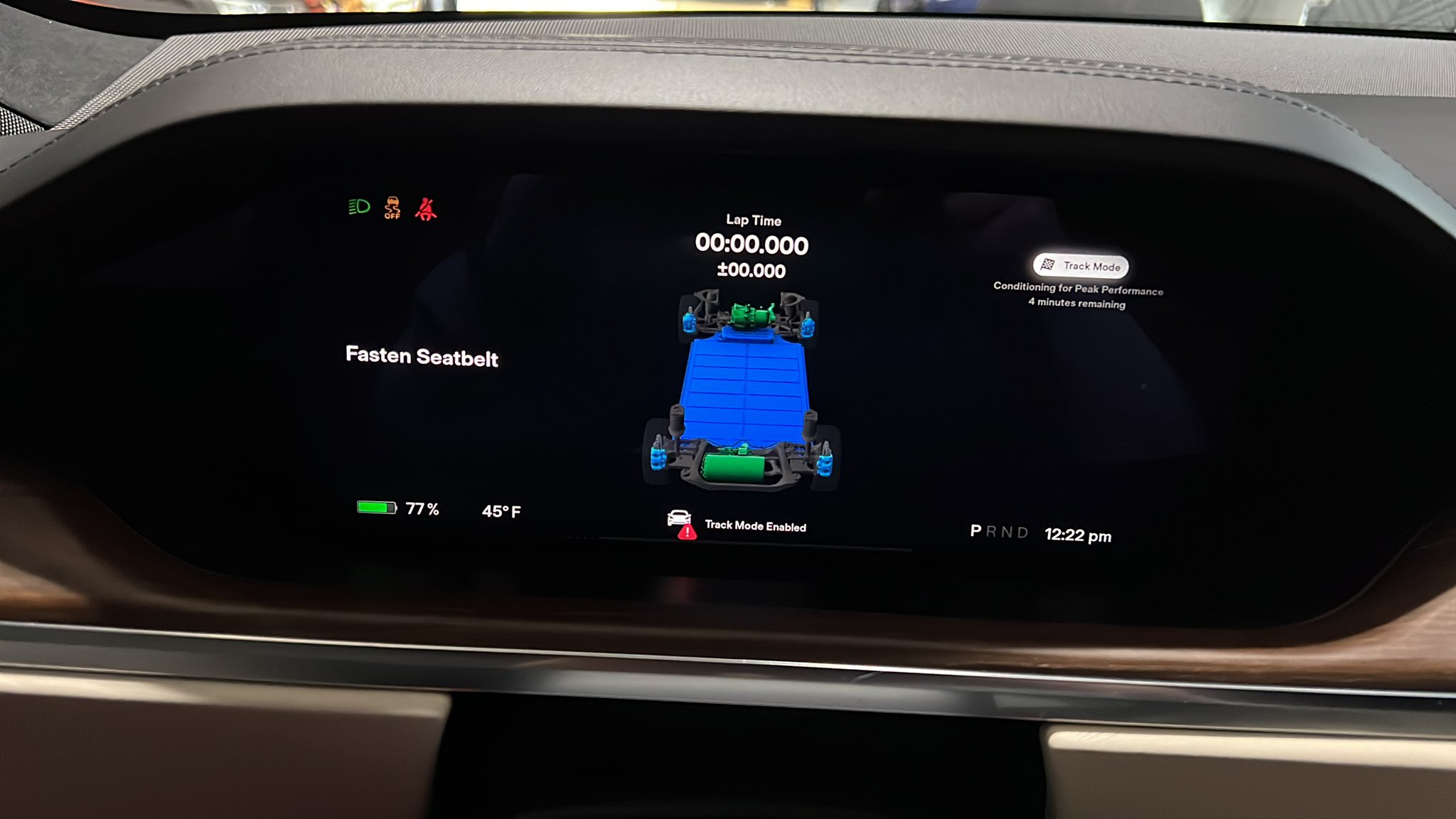Track Mode With Torque Vectoring For The Model S Plaid is Announced by Tesla

Sunday, January 9, 2022 | Chimniii Desk
Key Highlights
- Tesla unveiled a new high-performance driving mode for the Model S Plaid this week.
- Plaid Track Mode is similar to Model 3 Track Mode in that it adjusts the car's functions to prioritise driving on a racing track.
- Additionally, the Plaid Track Mode maximises regenerative braking power to recover more energy, minimise brake stress, and provide the driver with improved control with a single pedal.
- Additionally, the car's ride height is adjusted to its lowest setting, and the adaptive suspension damping is tuned for track handling.
- Tesla does not name a price for the Track Mode, and given that it is merely tweaking the car's existing functions, it is possible that it will be included in the vehicle's base price.
Advertisement
Tesla unveiled a new high-performance driving mode for the Model S Plaid this week. Plaid Track Mode is similar to Model 3 Track Mode in that it adjusts the car's functions to prioritise driving on a racing track.
"Our goals with Plaid Track Mode were straightforward: to set the fastest lap time for a production electric vehicle at Germany's Nürburgring and to enable individual adjustment of stability control, handling balance, and regenerative braking to give drivers greater control over the vehicle on the racetrack," the automaker explained in a January 6 blog post.
Developed to maximise the 1,000 hp (1,014 PS/746 kW) of the Model S Plaid, the driving mode optimises powertrain cooling, torque vectoring, and configurable dynamics settings to assist drivers in achieving the fastest lap times possible.

To begin, the setting cools the battery pack to the lowest possible temperature in order to form a chilled thermal mass. This, together with the shared coolant loops between the battery and motors, helps keep the entire system cooler for longer, allowing drivers to make the most of the car's performance for an extended period of time.
Tesla's engineers have also used the power units to assist with steering. The business claims that with torque vectoring, the Model S can send extra power to the outside wheels to assist in rotating the vehicle. Additionally, it can alter the torque mix between the front and rear wheels to optimise turn-in response. Additionally, the Plaid Track Mode maximises regenerative braking power to recover more energy, minimise brake stress, and provide the driver with improved control with a single pedal. It may still be modified, along with the stability control settings, via the infotainment screen.
Meanwhile, Tesla's Vehicle Dynamics Controller is tailored to evaluate steering angle, accelerator position, and brake pedal inputs to establish the driver's intended placement of the car and to allow for tyre slippage to provide the driver increased control.
Advertisement

Additionally, the car's ride height is adjusted to its lowest setting, and the adaptive suspension damping is tuned for track handling. Rebalanced damping enables the car to settle more quickly over rough areas such as curbs while simultaneously lowering pitch and yaw.
Finally, the driving mode has its own screen setting in the infotainment system, complete with a thermal monitor, lap timer, G-meter, dashcam video capture, and telemetry.
Tesla does not name a price for the Track Mode, and given that it is merely tweaking the car's existing functions, it is possible that it will be included in the vehicle's base price. Additionally, the company suggests matching the Plaid Track Mode with the recently released Model S Plaid Carbon Ceramic Brake Kit, which is sold separately and costs $20,000.

Advertisement